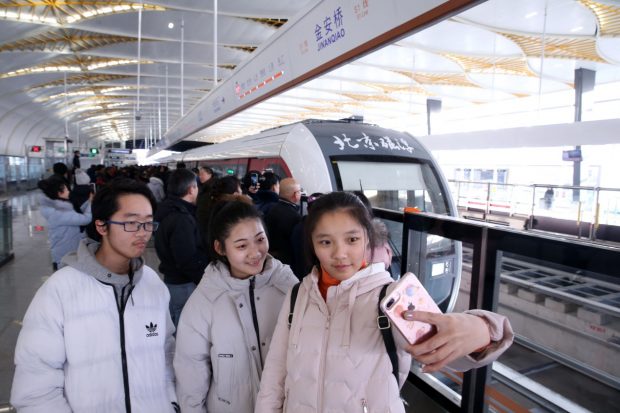
China to run driverless maglev train at 200 kph in 2020

China will roll off its first self-developed driverless commercial maglev train with a designed speed of 200 km per hour in early 2020, said Zhou Qinghe, chairman of CRRC Zhuzhou Locomotive Co., Ltd, developer of the train. The new train, known as the commercial maglev 3.0, will be the world’s first maglev trains to run at such a speed, Zhou, who is also a deputy of the 13th National People’s Congress, told reporters on March 3. Zhou said that the company leads the efforts to develop the new train with more than 20 research institutions and enterprises in China. Once put into operation, it will be the fastest homegrown maglev train for commercial use in China.
Zhou said the maglev 3.0 has made breakthroughs compared to the first two versions of the train—maglev 1.0 and maglev 2.0—which were designed to run at 100 km per hour and 160 km per hour, respectively. The contactless power supply is replaced by a non-contact induction power supply. The traction motor is converted from the original short stator asynchronous motor to a long stator synchronous motor, and the traction inverter was also repositioned from the bottom of the train to the ground power station. Traction efficiency of the new train has been improved by 40 percent, compared with the 1.0 type. The train can climb the height of a 4-storey building in 100 meters like a roller coaster. Its speed at curves can increase by more than 15 percent with sound acceleration performance, with an increase of more than 50 percent on average accelerated speed. The train can accommodate more passengers and is suitable for use on intercity and inner-city routes with a distance from 50 to 200 kilometers.
Zhou said the latest maglev train is also equipped with the “strongest brain” controlled by a smart ground operation control system, which enables unmanned driving, vehicle wireless communication, online condition monitoring, big data analysis and other technologies. The “brain” can also diagnose faults in vehicles, tracks, and power supply in real time, ensuring safe and reliable operation.
By Wang Hailin
(People’s Daily)


